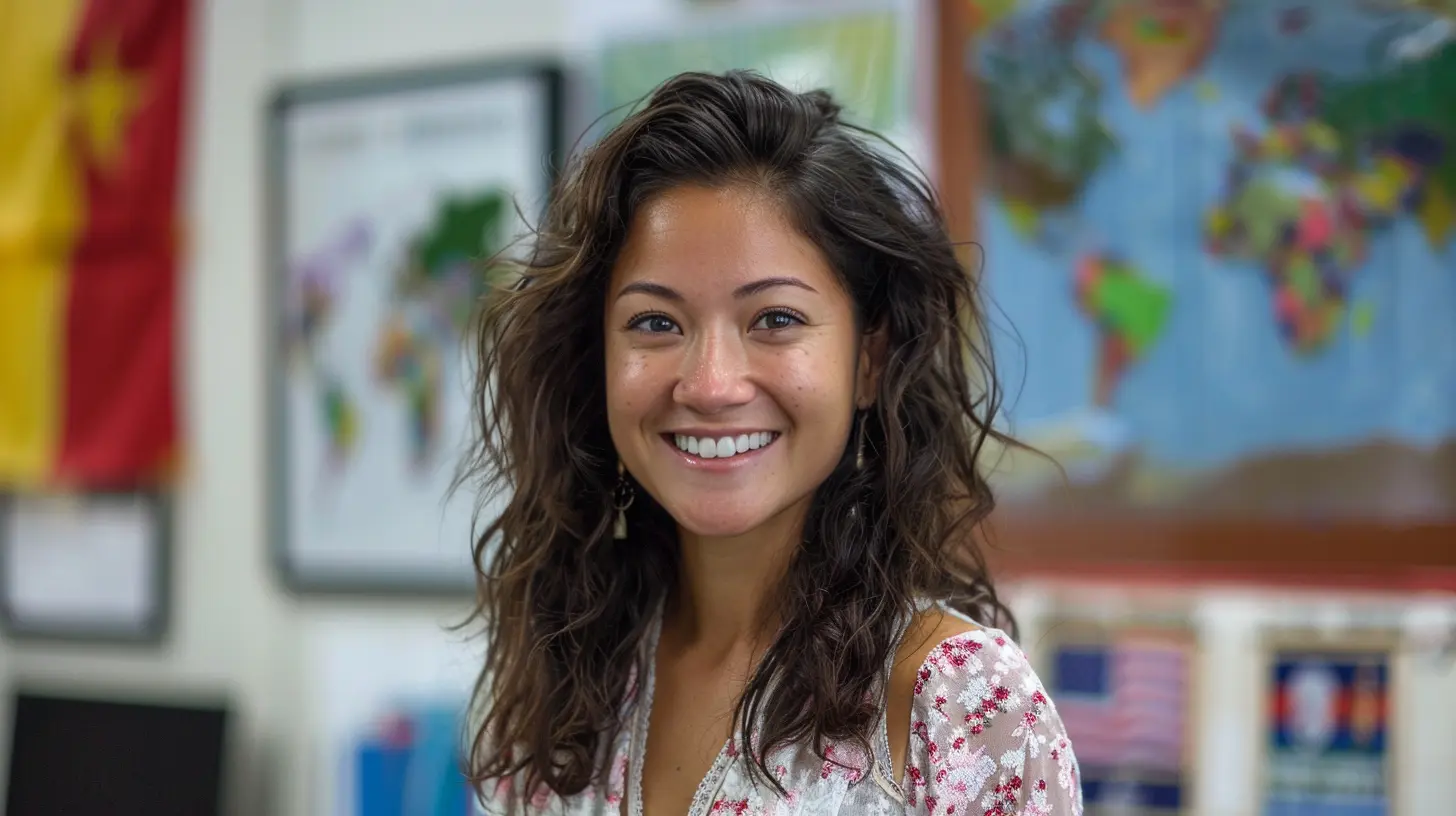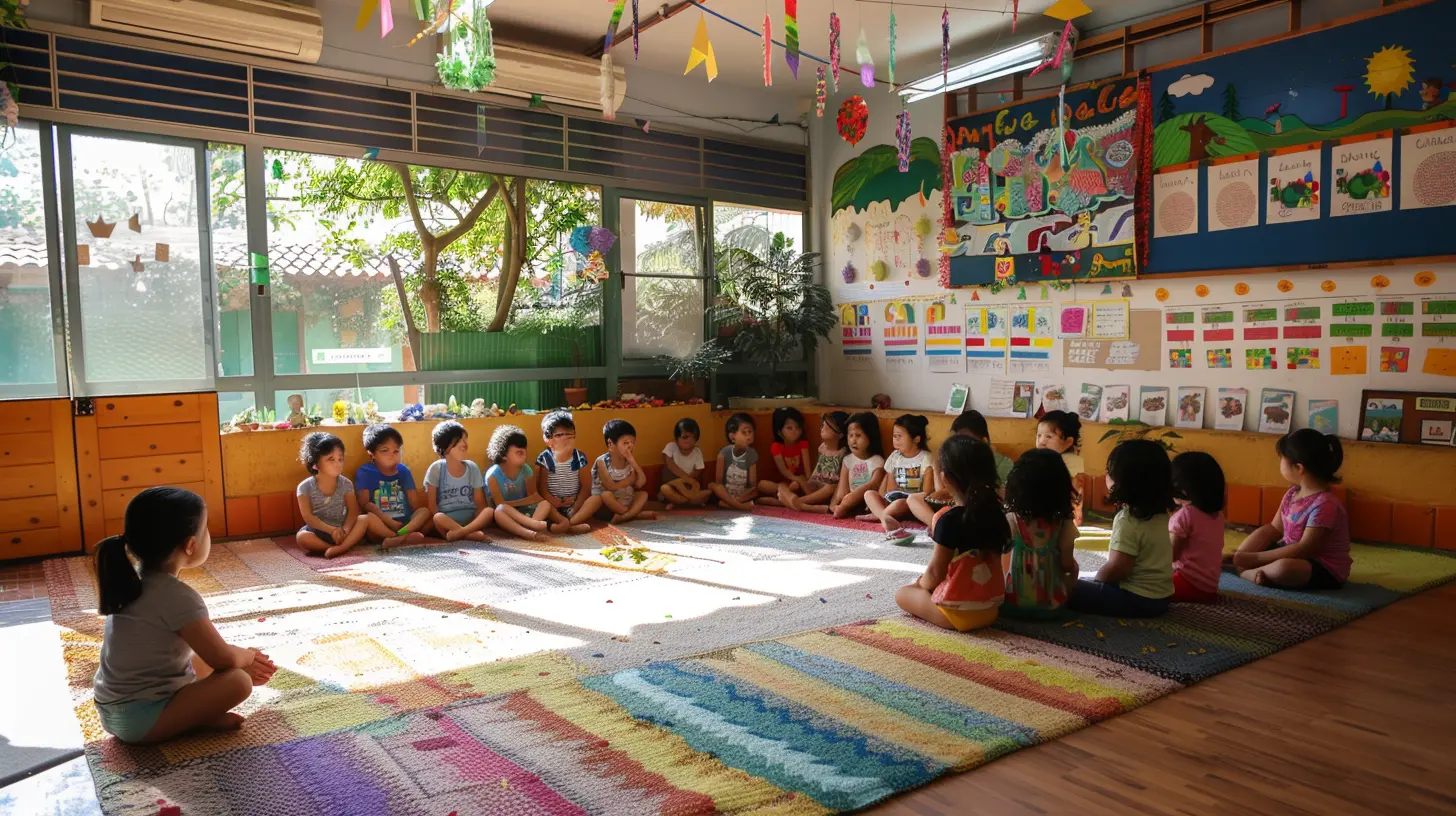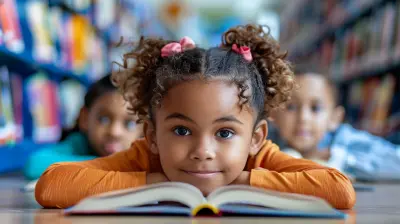Fostering Global Citizenship with Bilingual Classrooms
5 June 2025
In today’s interconnected world, the concept of global citizenship is more important than ever. With technology linking us across borders, different cultures, ideas, and perspectives are now just a click away. But how do we prepare younger generations to thrive in this global landscape? Well, one powerful way is through bilingual education.
Bilingual classrooms aren't just about learning a second language. They open the door to understanding new cultures, promoting empathy, and fostering global citizenship. But how exactly does this happen? Let's take a deep dive into how bilingual education can shape future global citizens.

What is Global Citizenship?
Before we get into the role bilingual classrooms play, let’s first define what we mean by "global citizenship."Global citizenship is all about recognizing that we are part of a larger, interconnected world. It’s the idea that our actions and decisions impact not just our local communities, but the world at large. Being a global citizen means:
- Understanding and respecting cultural diversity.
- Being aware of global issues like climate change, inequality, and human rights.
- Actively participating in making the world a better place.
It’s about raising people who are not just good citizens of their own country, but of the world. And, as you might guess, bilingual education can be a huge catalyst for this kind of mindset.

The Role of Language in Shaping Global Perspectives
Language is more than just a tool for communication—it’s a gateway to understanding different cultures, histories, and ways of thinking. When students learn a second language, they aren't just memorizing vocabulary and grammar. They are immersing themselves in a new culture, learning different perspectives, and building empathy.Think of language as a bridge. When students learn another language, they are essentially crossing that bridge into a new world that broadens their horizons. They begin to see that there’s more than one way to view the world, and that’s where global citizenship starts to take root.
Cultural Awareness and Bilingual Classrooms
One of the key components of global citizenship is cultural awareness—the ability to understand, respect, and appreciate cultures that are different from one’s own. Bilingual classrooms naturally encourage this.For example, in a bilingual Spanish-English classroom, students are exposed not only to the language but also to the cultures of Spanish-speaking countries. They might learn about traditions, holidays, and histories that are vastly different from their own. This exposure fosters an appreciation for diversity and helps students understand that the world is made up of many different, but equally valuable, cultures.
Empathy and Global Citizenship
Learning a second language also fosters empathy—the ability to understand and share the feelings of others. When students engage with different languages and cultures, they begin to put themselves in the shoes of others. They start to see the world from a perspective that’s different from their own, which is a key trait of a global citizen.For example, when students learn about the struggles faced by people in other parts of the world, whether it’s due to poverty, war, or climate change, they begin to develop a sense of empathy. They start to care about global issues and feel a responsibility to help make the world a better place.

Cognitive Benefits of Bilingual Education
Now, let’s take a quick detour and talk about the cognitive benefits of bilingual education. Learning a second language doesn’t just make students more culturally aware—it also boosts their brainpower.Enhanced Problem Solving and Critical Thinking
Studies have shown that bilingual students often outperform their monolingual peers when it comes to problem-solving and critical thinking. Why? Because learning a second language requires students to switch between languages and think in different ways. This mental flexibility translates to other areas of learning, making bilingual students better at solving complex problems and thinking critically about the world around them.Improved Adaptability and Creativity
Being bilingual also enhances creativity. When students are exposed to different ways of expressing ideas, they become more adaptable and open to new ways of thinking. This is especially important in today’s rapidly changing world, where being able to adapt and think creatively is a must.Long-Term Cognitive Benefits
Research has also found that bilingualism can have long-term cognitive benefits, including delaying the onset of dementia and Alzheimer's disease. So, in addition to fostering global citizenship, bilingual classrooms are giving students a cognitive edge that will benefit them throughout their lives.
Bilingual Education and Global Competence
The Organization for Economic Cooperation and Development (OECD) defines global competence as the ability to “examine local, global, and intercultural issues, understand and appreciate different perspectives and worldviews, and interact respectfully with others.”Bilingual classrooms are a natural breeding ground for global competence. Students who are bilingual are more likely to:
- Understand and appreciate different perspectives.
- Communicate effectively with people from different cultures.
- Be more open-minded and less likely to hold ethnocentric views.
Real-World Application
Imagine a student who grows up in a bilingual classroom. By the time they enter the workforce, they’re not just equipped with language skills—they’re equipped with the ability to communicate, collaborate, and solve problems in a multicultural environment. That’s a huge advantage in today’s global economy.In fact, many employers are actively seeking out individuals who are globally competent. Companies are looking for employees who can navigate the complexities of the international market, communicate with clients and colleagues from different cultural backgrounds, and think creatively about global challenges. Bilingual students are well-positioned to fill these roles.
The Importance of Early Exposure
You might be wondering: when is the best time to start fostering global citizenship through bilingual education? The answer is the earlier, the better.Young children are incredibly adept at learning languages. In fact, research shows that the younger a child is when they are exposed to a second language, the more likely they are to become proficient in that language. But it’s not just about language proficiency—early exposure to bilingual education also helps shape a child’s worldview.
When children are exposed to different languages and cultures from a young age, they grow up with a natural appreciation for diversity. They are more likely to be open-minded, empathetic, and globally aware as they grow older. This early exposure sets the foundation for global citizenship.
Overcoming Challenges in Bilingual Education
Of course, bilingual education isn't without its challenges. Implementing a bilingual program requires resources, trained teachers, and curriculum development. There can also be resistance from parents or communities who may not fully understand the benefits of bilingual education.However, the benefits far outweigh the challenges. With the right support and commitment, schools can create bilingual environments that foster global citizenship and prepare students for the world beyond their local community.
Addressing Common Concerns
One common concern is that students in bilingual classrooms might fall behind in their primary language or other subjects. However, research has shown that bilingual students often perform just as well, if not better, than their monolingual peers in core subjects like math and reading. The cognitive benefits of bilingualism help students excel across the board.Another concern is that bilingual education might lead to cultural assimilation or the loss of a student’s native culture. But in reality, bilingual education promotes cultural preservation. It allows students to maintain their native language and cultural identity while also gaining the skills to navigate the broader global landscape.
How Schools Can Foster Global Citizenship Through Bilingual Education
Now that we’ve explored the benefits of bilingual education, let’s talk about some practical ways schools can foster global citizenship through bilingual classrooms.1. Curriculum Integration
Schools can integrate global issues into the curriculum, using language learning as a tool to explore topics like climate change, social justice, and human rights. For example, a bilingual Spanish-English classroom might study the impact of deforestation in Latin America or the role of indigenous peoples in environmental conservation.2. Cultural Exchanges
Schools can also foster global citizenship by creating opportunities for cultural exchange. This might involve virtual exchanges with students from other countries, guest speakers from different cultural backgrounds, or field trips to cultural centers or international organizations.3. Encouraging Multilingualism
While bilingual education typically focuses on two languages, schools can encourage students to explore additional languages. Multilingualism takes global citizenship to the next level, giving students even more tools to engage with the world around them.4. Promoting Empathy and Social Responsibility
Finally, schools can foster global citizenship by promoting empathy and social responsibility. This might involve community service projects, discussions about global issues, or encouraging students to think about how they can make a positive impact on the world.
Conclusion: A World of Possibilities
In a world that’s becoming more interconnected every day, fostering global citizenship through bilingual classrooms is not just a nice-to-have—it’s a necessity. Bilingual education helps students understand and appreciate different cultures, develop empathy, and gain the cognitive skills they need to navigate an increasingly complex world.By embracing bilingual classrooms, we’re not just teaching students how to speak a second language. We’re giving them the tools to become responsible, engaged, and empathetic global citizens—ready to take on the challenges and opportunities of the 21st century.
all images in this post were generated using AI tools
Category:
Bilingual EducationAuthor:

Monica O`Neal
Discussion
rate this article
3 comments
Lauren Ramirez
This article highlights the vital role bilingual classrooms play in cultivating global citizenship and cross-cultural understanding.
June 16, 2025 at 3:38 AM

Monica O`Neal
Thank you! I'm glad you found the article highlights the importance of bilingual classrooms in promoting global citizenship and cross-cultural understanding.
Jasmine Whitaker
This article beautifully highlights the power of bilingual classrooms in nurturing global citizens. By embracing diverse languages and cultures, we not only enhance communication skills but also foster empathy and understanding. Let’s continue to champion these environments for a more connected and compassionate world!
June 7, 2025 at 4:37 AM

Monica O`Neal
Thank you for your thoughtful comment! I wholeheartedly agree that bilingual classrooms are vital in cultivating empathy and global citizenship. Let's keep advocating for these enriching environments!
Poppy Blevins
This article beautifully highlights the importance of bilingual education in nurturing global citizenship. It encourages cultural empathy and understanding, fostering a more interconnected world. Thank you for sharing!
June 5, 2025 at 2:56 AM

Monica O`Neal
Thank you for your thoughtful comment! I’m glad you found the article valuable in highlighting the role of bilingual education in promoting global citizenship.



